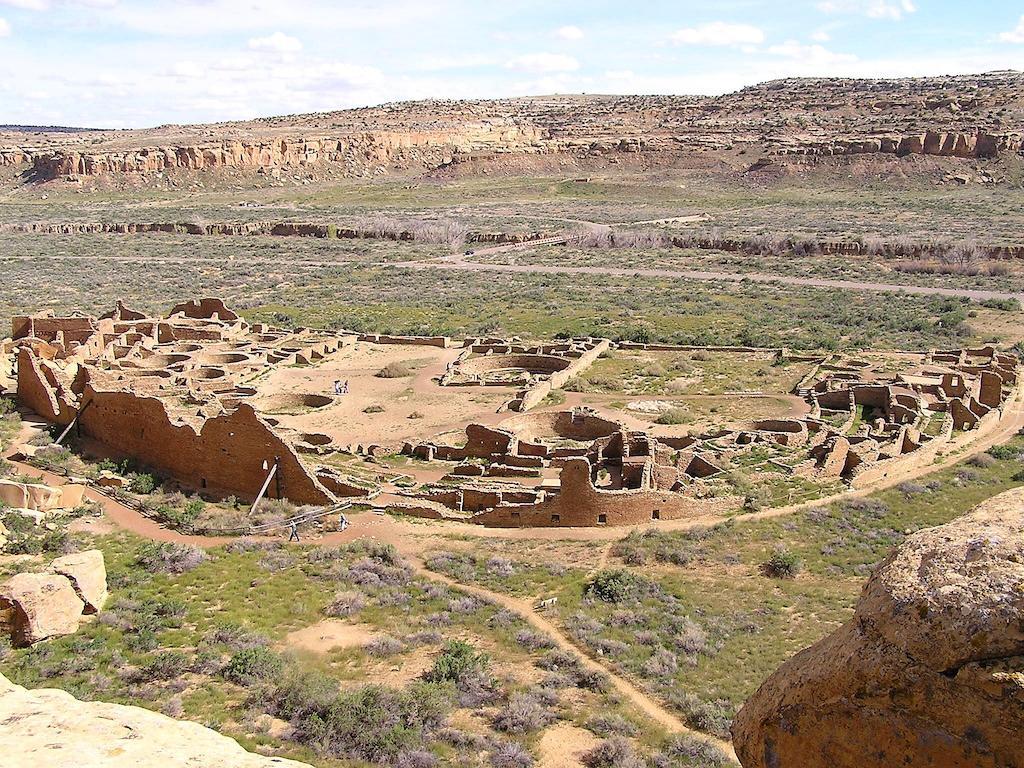
Interior Secretary Deb Haaland on Friday issued an order to protect the area around Chaco Culture National Historical Park from energy development and mining/NPS file
The Biden administration moved Friday to protect the Chaco Canyon area from energy development by withdrawing public lands there from oil and gas leasing and mining claims for a 20-year period.
The public land order issued by Interior Secretary Deb Haaland blocks energy and mining claims, subject to valid existing rights, within a 10-mile radius of Chaco Culture National Historical Park, and responds to decades of efforts from tribes, elected officials, and the public to better protect the sacred and historic sites and tribal communities currently living in northwest New Mexico, an Interior Department release said.
“Protecting Indigenous lands is important for future generations to understand our country and to respect the Pueblos’ sacred culture," said Theresa Pierno, president and CEO of the National Parks Conservation Association. "We are grateful for today’s action, which is the latest move by the Biden administration that prioritizes preserving, instead of industrializing, Indigenous lands. We strongly support and encourage continued actions by this administration, which also restored protections for Bears Ears and recently established Avi Kwa Ame National Monument.
“There are limits to this administrative protection, as 20 years is significant but also the equivalent of an eye blink on this timeless landscape," she added. "The National Parks Conservation Association calls on Congress to finish the job and approve legislation championed by the entire New Mexico delegation to permanently protect the region.”
Interior staff said the secretary's action was informed by extensive public engagement, including significant consultation with tribal nations. The withdrawal applies only to public lands and federal mineral estate and does not apply to minerals owned by private, state or tribal entities. It does not affect valid existing leases; during the 20-year withdrawal period, production from existing wells could continue, additional wells could be drilled on existing leases, and Navajo Nation allottees can continue to lease their minerals.
“Efforts to protect the Chaco landscape have been ongoing for decades, as tribal communities have raised concerns about the impacts that new development would have on areas of deep cultural connection. Today marks an important step in fulfilling President Biden’s commitments to Indian Country by protecting Chaco Canyon, a sacred place that holds deep meaning for the Indigenous peoples whose ancestors have called this place home since time immemorial,” said Haaland. “I value and appreciate the many tribal leaders, elected officials, and stakeholders who have persisted in their work to conserve this special area.”
Chaco Culture National Historical Park and the surrounding desert landscape contain rich archaeological resources and irreplaceable cultural sites where Pueblo and tribal nations continue to honor their ancestral traditions and customs. The area continues to be home to tribal communities today. Structures in the Chacoan landscape date back thousands of years (approximately 850 to 1250) to when the area flourished as a social and religious center for the Chacoan peoples.
In 1987, the national park was designated as a United Nations Educational, Scientific and Cultural Organization World Heritage Site whose “outstanding natural and cultural resources form the common inheritance of all mankind.” In 2022, there were more than 41,000 visitors to the park who helped boost the local economy.
The U.S. Bureau of Land Management has not issued an oil and gas lease within the 10-mile buffer for approximately 10 years, and a moratorium on new mining claims has been in place since January 2022 while the BLM undertook the assessment of the proposed withdrawal. The withdrawal of public lands will help protect the sites and living landscape from encroaching mineral development that can destroy, displace or alter the integrity of the cultural landscape.
In conducting its review, the BLM considered several alternatives, including no action, a 5-mile withdrawal, and a 10-mile withdrawal. The 10-mile withdrawal provides the greatest protection for the more than 4,700 known archaeological sites located outside of the national park. A 5-mile withdrawal would leave more than 2,800 of those sites vulnerable to impacts from mineral development, said Interior.
“The exceptional landscape in the Greater Chaco region has profound cultural importance,” said BLM Director Tracy Stone-Manning. “Today’s announcement marks an important step in ensuring Indigenous voices help inform the management of our public lands. I am deeply appreciative of those who gave of their time to engage with us, and to the BLM team members who took great care to be as inclusive as possible in their engagement.”
The All Pueblo Council of Governors, representing the 19 Pueblos in New Mexico, has consistently called for the withdrawal of federal lands in the Greater Chaco region that hold immense cultural significance to them. Since 2018, the New Mexico congressional delegation has introduced legislation to permanently protect federal lands around Chaco Canyon with a 10-mile buffer. The state of New Mexico halted leasing of their minerals around Chaco Canyon through a state-level moratorium in 2019.
In addition to the withdrawal announced Friday, the Interior Department is undertaking a broader assessment of the Greater Chaco cultural landscape to ensure that public land management better reflects the sacred sites, stories, and cultural resources in the region. The BLM and the Bureau of Indian Affairs are co-leading discussions with tribes, communities, elected officials, and interested parties to explore ways the Interior Department can manage existing energy development, honor sensitive areas important to tribes, and build collaborative management frameworks toward a sustainable economic future for the region. The first phase of the Honoring Chaco Initiative included a set of 45 broader interviews, as well as planning sessions that culminated in 2.5 days of meetings with approximately 30 participants comprised of Tribal Historic Preservation Officers, Tribal organizations, Tribally led non-governmental organizations and representatives of the State of New Mexico.


